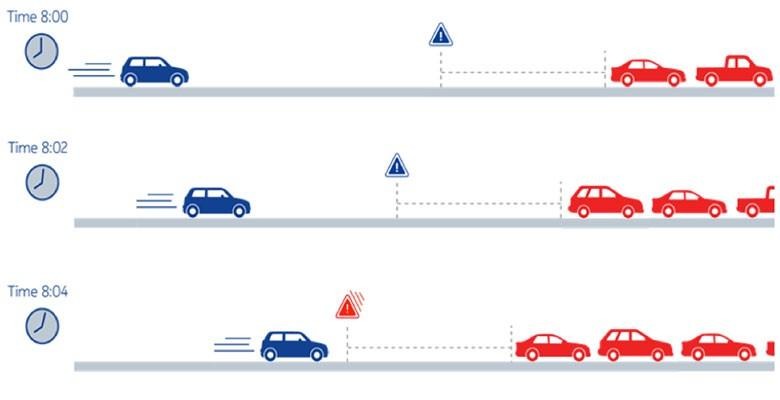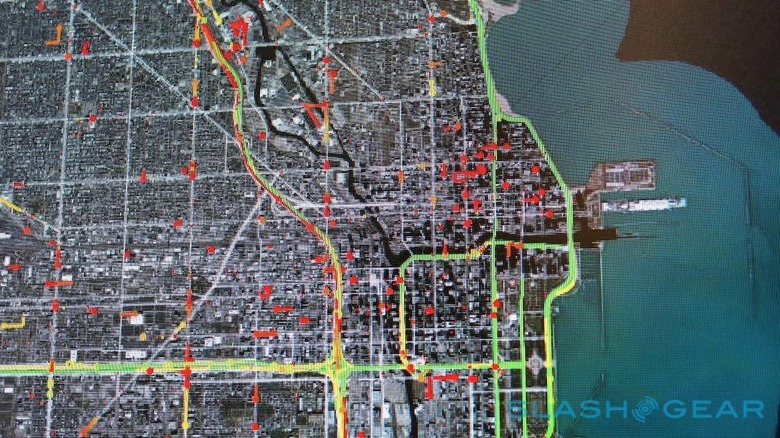HERE's Talking Traffic Could Stop You Getting Rear-Ended
Stomping on your brakes in panic at the sight of a sudden sea of brake lights ahead could be a thing of the past, if HERE has its way. The company, recently acquired by a consortium including Daimler, BMW, and Audi, has been working on real-time traffic pattern spotting, in the hope of identifying unexpected slow-downs or traffic jams so as to warn drivers to ease off the speed before it's too late.
The problem is a common one. "The tail ends of these jams usually come out of nowhere and are difficult to foresee," Johannes Glossner, HERE Traffic European Marketing Manager, explains. "It is not like a case where there is a bottleneck and the driver expects to slow down soon, it can just suddenly occur."
While it may not be unusual, it's also relatively hard to map. Traditional traffic jam identification systems often rely on more significant slow-downs or fully stationary vehicles, missing out on the more temporary – but no less dangerous – ebb and flow.

HERE's solution relies on what the company calls probe data, individual movement patterns of each mobile device or PND running the company's software. The data from each is minimal – an anonymized device ID, latitude, longitude, speed, and heading – but with billions of points of data flooding in, it's enough to understand exactly what's happening, in real-time, at a granular level.
The company already uses it to spot traffic congestion and is even discussing self-healing cartography that would compare probe data with preexisting maps and intuit new and modified roadways as a result.

Currently, HERE isn't clear on how the warnings might be delivered: one possibility is a notification in whatever navigation app is being used.
As Mercedes-Benz, Audi, and BMW begin to dig deeper into HERE's toolkit, meanwhile, it could also be flagged up with a warning light on the dashboard.
Although intended at this stage for alerting human drivers, the technology could also have broad implications for self-driving and semi-autonomous cars, giving them greater insight into the nature of the road conditions ahead. Such vehicles are being worked on by all three automakers in the consortium.
SOURCE HERE
